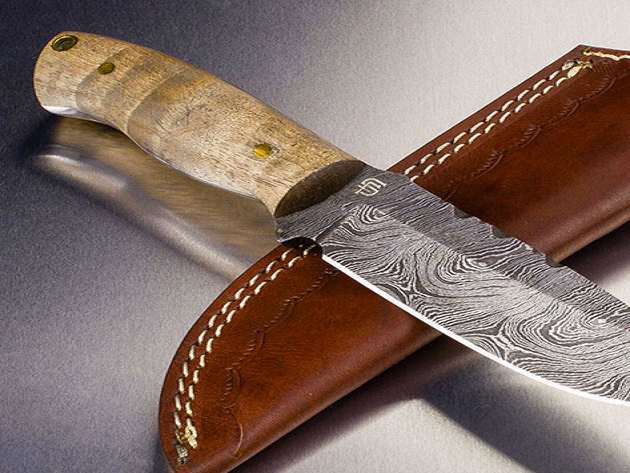Category: Manufacturing
What Are Steel Knives Made Of?

At its simplest form, steel is just a mixture of iron and carbon that make this uniquely strong alloy. However, modern techniques add small bits of other elements that keep the steel sharp, maintain its edge, and prevent rust.
Making a good steel knife is a delicate balancing act. If you make the knife exceptionally hard it will retain its edge well, but it will be prone to breaking or chipping. If you attempt to make it corrosion-proof, it will likely be too soft and have a weak edge. If you want the best quality steel with no weaknesses, that will be very expensive.
Knowing that there are benefits and drawbacks to emphasizing one characteristic of the blade over another, steelmakers have become adept at adding different alloys and compounds to steel to change its properties. For example, while carbon is the primary element that turns iron into steel, adding more carbon increases the “hardness” of the blade. It also improves the blade’s wear resistance, edge retention, and tensile strength. Adding too much carbon can make the blade brittle however, so be careful.
Adding chromium to steel increases its resistance to corrosion, with steel being made of 13% or more of chromium being referred to as “stainless.” Chromium also combines with the carbon in the blade to create carbides, which increase the tensile strength and edge retention of the blade. Similarly, adding vanadium to the blade creates a very hard form of carbide that increase the wear resistance of the blade. Modern steel blades often contain significant amounts of vanadium.
Carbides are basically small, very hard particles that form when the elements are melted together to form the steel. These carbides are even stronger than the base steel itself, and can be seen on the blade if you look closely. Traditionally, steel is made by combining all the elements with carbon and iron, melting them down, and then pouring the hot liquid into a mold. After the steel cools, it is called an alloy, and you have your knife. The only drawback to this method is that the different particles in the steel cool unevenly, creating carbides that are not consistent in shape or size. A more modern way of cooling the steel is to blast it with a cool gas that instantly cools the steel down, and then applying pressure to the alloy. This results in a more even distribution of the carbides, and one mean blade!
Since knives are so dangerous, it’s important to properly dispose of them. If you just throw it in the trash, it could easily rip through the bag! The proper way to dispose of a knife is to wrap it in bubble wrap, newspaper, or cardboard, and tie it to a knife with a zip tie, small cord, or masking tape. To be even safer, put the knife in a cardboard box and then throw it out. But you don’t NEED to throw it out. If the blade is dull, you can take it to a knife sharpener or buy one from the store yourself. If you want to recycle it you can visit your local recycling center, just call ahead to make sure that they accept metal. If you have any more questions about proper disposal methods, just ask Lakeland Dumpster Rental, who would be happy to answer any questions you may have.
Recent Comments